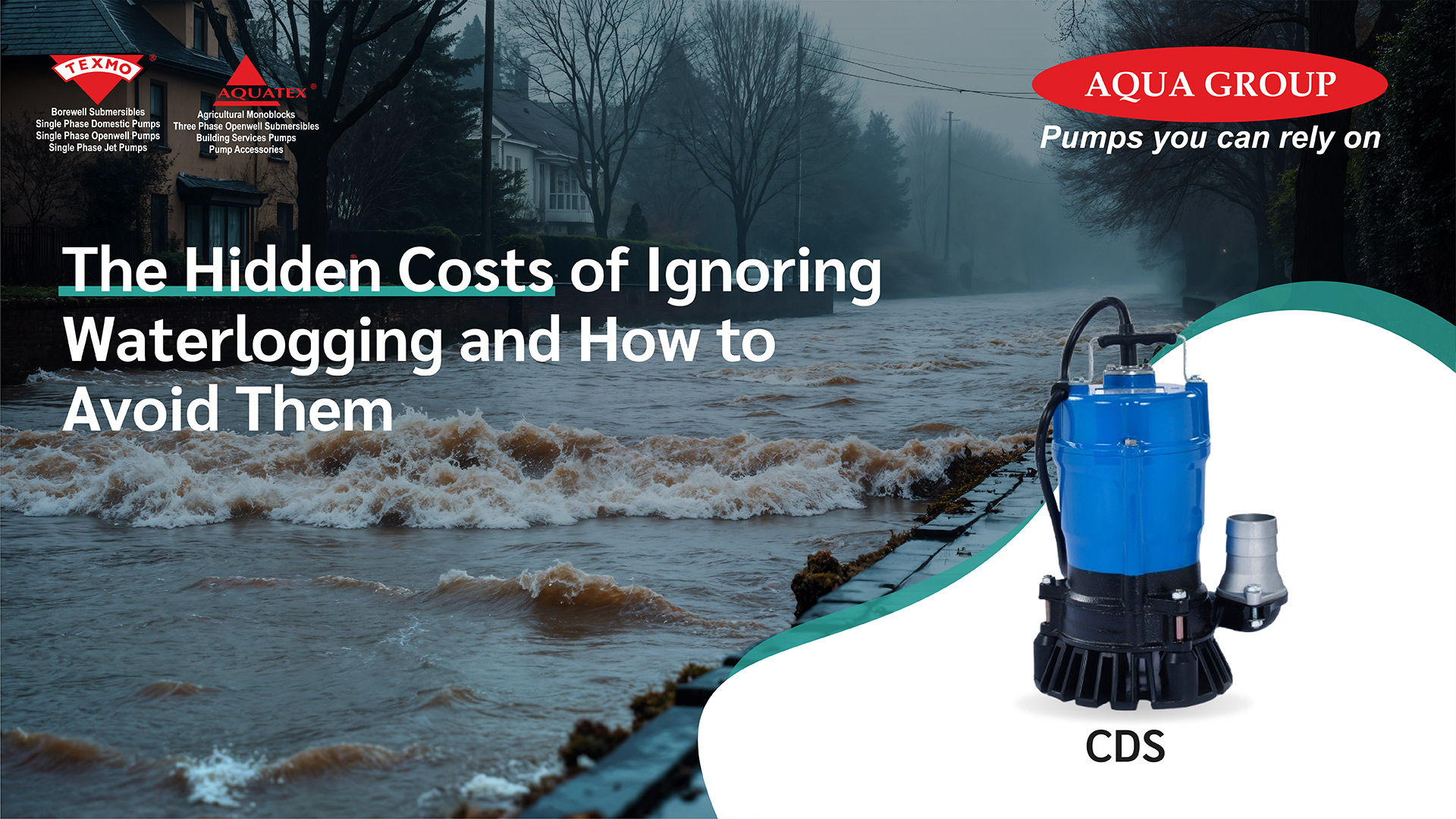
The Hidden Costs of Ignoring Waterlogging and How to Avoid Them
16-07-2025
In many parts of India, especially during monsoon and post-monsoon seasons, waterlogging is often seen as a temporary nuisance, something to “wait out.” But beneath the surface lies a far more serious issue. Ignoring water accumulation at construction sites, farms, or industrial yards comes with hidden costs that are often underestimated until they spiral into delays, damage, and long-term financial losses.
At Aqua Group, we believe that addressing waterlogging isn’t just about drainage; it’s about protecting your assets, productivity, and safety. And that begins with understanding what you’re really risking by doing nothing.
The Real Impact of Waterlogging
Whether it’s at a civil construction site, a mining pit, a manufacturing facility, or an agricultural field, stagnant water can silently wreak havoc in the following ways:
- Project Delays & Downtime
Flooded work areas mean stalled operations. Excavators can’t move, materials can’t be laid, and workers can’t access key areas. Every hour of downtime translates into wage costs, equipment idling, and contractual penalties. In infrastructure and real estate projects, even a day’s delay can throw off carefully planned timelines. - Foundation & Structural Damage
Water saturation around building foundations or under equipment platforms can compromise structural stability. Over time, this can lead to cracks, settling, corrosion of reinforcements, and a higher risk of long-term damage that may require costly remediation. - Equipment Damage
Pumps, mixers, motors, and other machinery exposed to standing water are at risk of corrosion and electrical faults. In industrial settings, even minor water ingress can damage sensitive control systems or drive up maintenance requirements. - Health & Safety Hazards
Stagnant water is a breeding ground for mosquitoes and other pests, leading to health risks for onsite workers. Moreover, slippery surfaces, concealed pits, and submerged cables significantly increase the risk of accidents and workplace injuries. - Regulatory & Environmental Fines
Sites that do not manage water discharge properly may violate municipal or environmental norms, leading to fines, work stoppages, or even legal action. This is especially true in urban or ecologically sensitive zones where drainage has downstream effects.
The Cost of Inaction
Let’s look at an example. A construction firm postpones site dewatering after a heavy rain, assuming the water will recede in a day or two. However, the following occurs:
- Work stops for 3 days, resulting in ₹2 lakhs of idle labor and machinery costs.
- Concrete curing schedules are disrupted, requiring rework worth ₹1.5 lakhs.
- Water damages electrical cables, leading to ₹80,000 in repairs.
- Foundation water retention leads to long-term settling issues, costing over ₹5 lakhs in rectification work months later.
That’s nearly ₹9 lakhs in damage – all from what appeared to be a “temporary puddle.”
Proactive Dewatering: A Smart Investment
Avoiding these losses isn’t just possible, it’s simple and cost-effective. With the right dewatering pump system in place, you can clear accumulated water quickly, safely, and efficiently. Aqua Group’s range of CDS Series Dewatering Pumps are designed specifically for Indian site conditions, handling everything from rainwater runoff to silt-laden quarry water.
Some features that make our pumps ideal for flood and waterlogging situations:
- High discharge capacity for quick evacuation of water
- Robust construction to handle dirty water with grit, stones, and debris
- Thermal protection and water-resistant design for long life
- Lightweight and portable for rapid deployment across multiple locations
- Energy-efficient motors that reduce operational cost over time
How to Prevent Waterlogging in the First Place
Beyond just reacting to flooding, the smart approach is prevention. Here are some best practices for avoiding waterlogging issues altogether:
- Plan Site Drainage Before the Rains
During project planning, include surface grading, drain channels, and sump locations that direct water to designated pump points. - Deploy Dewatering Pumps Proactively
Set up standby pumps during the rainy season. This ensures you’re ready to act as soon as water starts accumulating, not after it’s already a problem. - Use Backup Power for Pumps
Ensure your dewatering system is connected to an alternative power source such as a generator, so it’s operational even during outages. - Inspect and Maintain Equipment
Dewatering pumps should be regularly checked, especially before the monsoon season, to ensure they are free from clogs, electrical faults, or mechanical wear. - Train Site Personnel
Train staff to operate pumps efficiently, identify early signs of waterlogging, and maintain proper water disposal routes.
Aqua Group: Built for Indian Rains
With decades of experience in water pumping technology, Aqua Group understands the monsoon like few others do. Our solutions are trusted across India’s most waterlogged regions, from metro tunnels in Mumbai to construction sites in Chennai and quarries in Rajasthan to Coal Mines in Assam..
Every pump is engineered for reliability, built for rugged use, and supported by our strong dealer and service network. Whether you need a short-term rental solution or a long-term investment in dewatering infrastructure, Aqua Group is your trusted partner.
Conclusion: Don’t Wait Until It’s Too Late
Waterlogging may appear harmless at first, but the true costs can be significant and long-lasting. A small investment in the right pump can save lakhs in potential losses, not to mention peace of mind and uninterrupted operations.
Choose Aqua Group’s dewatering solutions engineered for Indian terrain, trusted by professionals, and proven across industries. Because when the rains come, it’s not about braving the storm, it’s about being ready for it.
Explore our dewatering range at www.aquagroup.in.
